
The Olympic Games are often seen as a shining model of international unity– a chance for the world to come together around the beauty of sport and strengthen international bonds in the process. But often, this comes at a cost to the environment of the hosting city, such as large-scale urban redevelopment that later falls into disuse, massive energy consumption, waste management issues, and more. Yet in a time of looming climate crisis, hosting the Olympics is also a timely platform to showcase new forms of sustainability.
*To watch the video in full screen, please click on the image above, then click on the YouTube icon on the lower right-hand corner.
This is the mission of the Tokyo 2020 Olympic and Paralympic Games, which are ambitiously aiming to be the greenest games ever – and leading with innovative design that shows sustainability can be beautiful as well as necessary. As expressed in Tokyo 2020’s sustainability principle, “Be better, together – for the planet and the people,” the organizing committee has developed the games around the United Nation’s 17 sustainable development goals, and principles of “zero carbon” emissions through renewable energy sources and carbon offset credits. But this “green spirit” also extends to all aspects of the games, and particularly the design of iconic Olympic features such as the sport venues and athlete’s village, the torch, and the medals themselves.
The Stadium
Many design fans were overjoyed that the new Japan National Stadium would be designed by star architect Kengo Kuma. The stadium, which was completed in late 2019 in Shinjuku’s Meiji Jingu Gaien Park, will host the opening and closing ceremonies of the games as well as track and field competitions. It is innovative for more than just its elegant style, which takes cues from traditional Japanese architecture. It also features timber renewably sourced from all 47 prefectures of the country and an energy-efficient design allowing for natural air flow to avoid reliance on air conditioning during the hot summer when the games will take place.
The Olympic Village
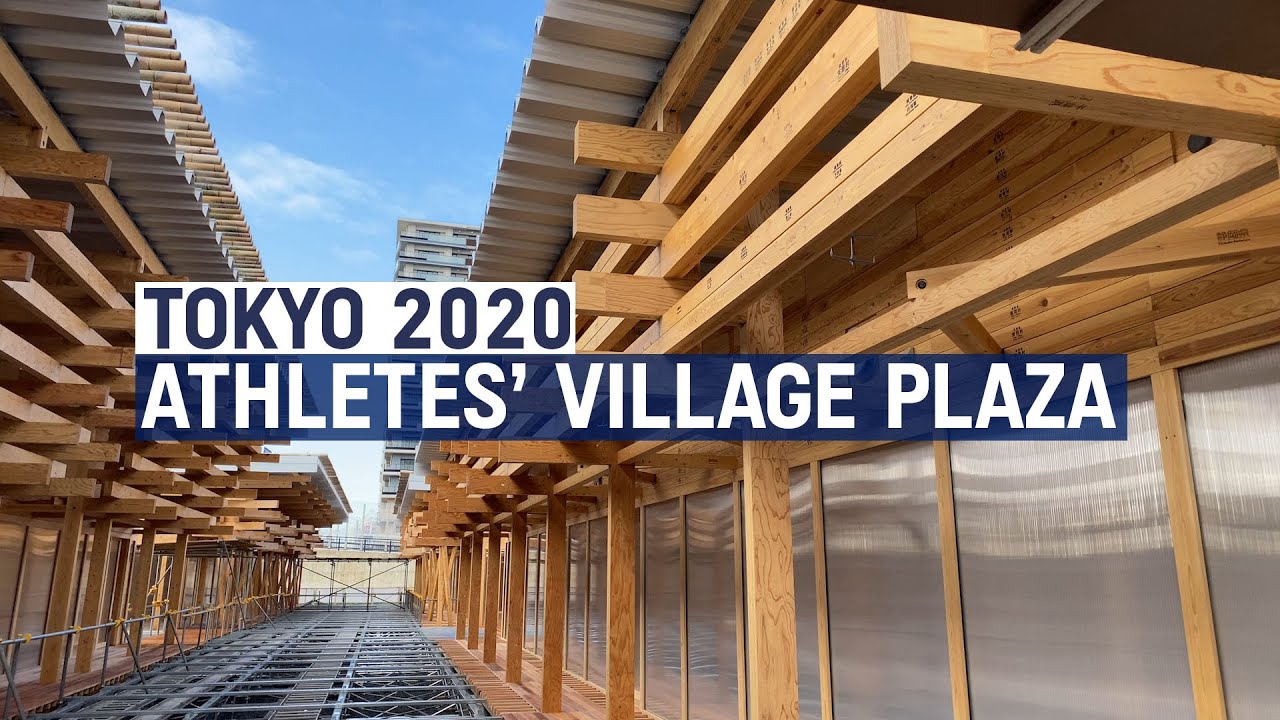
The Olympic Village built on the Harumi waterfront in the Chuo district of Tokyo was an even more far-reaching project. To ensure thoughtful development, the Tokyo 2020 organizers worked with the Tokyo Metropolitan Government to plan the design of this district for the period when the Olympic and Paralympic athletes will live there, but for post Games as well when it becomes an area of new housing for the city. During the games, the athletes and support staff will spend time in the breezy, open-air Village Plaza, which has also been sustainably designed and constructed from 40,000 pieces of timber including larch, Japanese cedar, and Japanese cypress donated by 63 municipal governments around the country. Each piece of wood in the complex has been stamped with its region of origin, so the athletes and visitors are also invited to play a “game” to spot as many of the donating regions as possible and collect them in a passport. After this summer, all that wood will be returned to its home districts to be used in public works projects.
The Torch
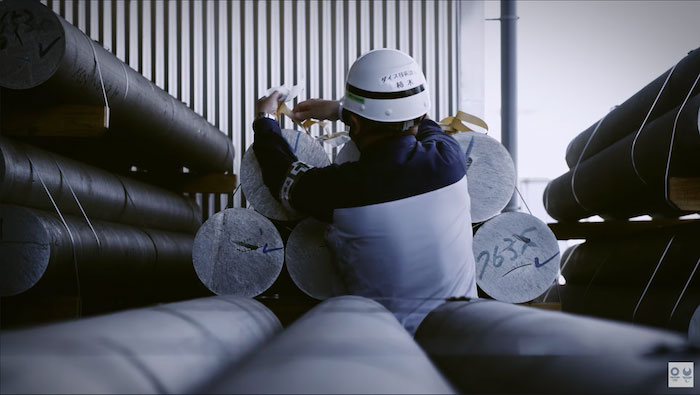
Tokyo 2020 Olympic Torch
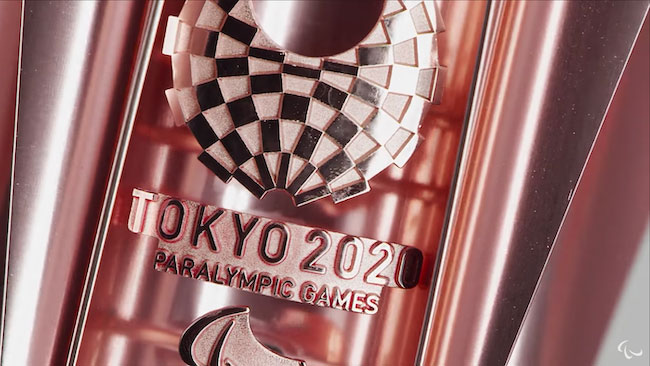
Tokyo 2020 Paralympic Torch
For the lighter and smaller icons of Olympic design, recycling and repurposing have also been key design strategies. The Olympic torch was built from a single sheet of metal which contained recycled aluminum from prefabricated housing units used in the aftermath of the Great East Japan earthquake a decade ago. The torch is both sustainable and meaningful in symbolizing the resilient spirit of Japan after that tragic disaster. Designed by Tokujin Yoshioka, the torch’s form is inspired by a traditional sakura (cherry blossom) motif, a flower that is central to Japanese culture and a reminder of the nation’s connection to the natural world. The torch just began its relay journey as sakura season began to unfold. It will travel the length and breadth of the country spreading the message of “Hope Lights Our Way”, carried by torch bearers whose uniforms were designed by Daisuke Obana, and made from recycled plastic bottles collected by Coca-Cola.
The Medals
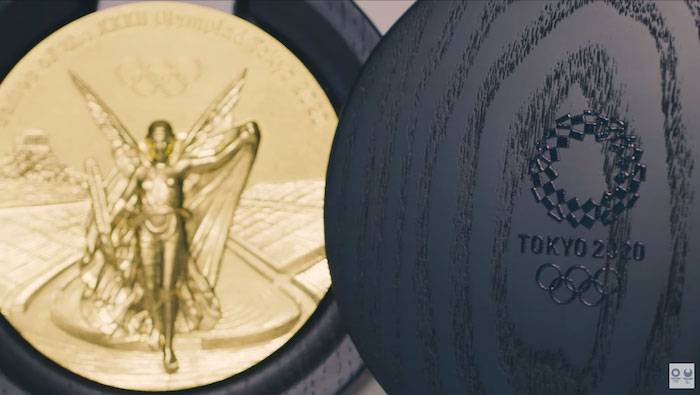
Tokyo 2020 Olympic Medals
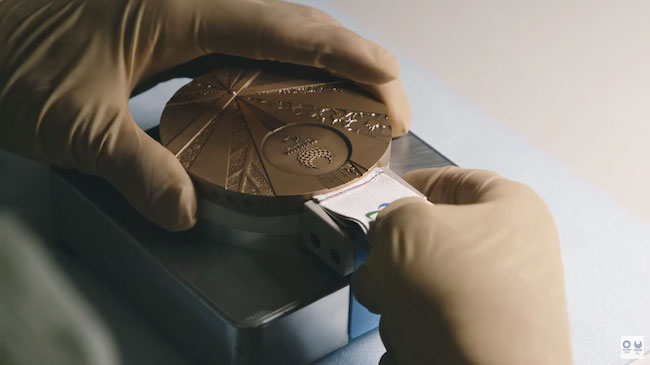
Tokyo 2020 Paralympic Medals
After the torch arrives this July and kicks off the Opening Ceremony in the new National Stadium, the games themselves will begin. Athletes will push themselves toward victory for their teams, their countries – and of course, the chance to take home a medal.
This year for the first time in history, every single medal awarded to athletes will have been made entirely from recycled materials. The approximately 5,000 gold, silver, and bronze medals were extracted from almost 80,000 tons of small electronic devices donated by the Japanese public over the course of two years, including around 6.21 million mobile phones collected at local NTT Docomo shops around the country. That’s around 158 million pounds of donated electronics which were disassembled, sorted, and processed into the gold, silver and bronze used to create the medals designed by Junichi Kawanishi. Kawanishi, who won the commission out of 400 entries in a competition held by Olympic organizers, said that in his medals “resemble rough stones that have been polished and which now shine with light and brilliance.” The recycling project as a whole shows this same national spirit of transforming basic materials or potential waste into something rare and beautiful.
Through these and other initiatives, Tokyo 2020 can ideally serve as a beacon of sustainability not only for future Olympics to come, but for all nations to focus on the urgent ecological issues of our time. As the climate crisis is one that requires true international cooperation to solve, there’s much to learn from the spirit of joy and collaboration that the games embody – and the brilliant designs that show how sustainability is truly in style.
Related Contents
Going for Gold | Japanese Olympic Design on the World Stage
Innovative Symbols of Sport | Graphic Designing the Olympic Games

